
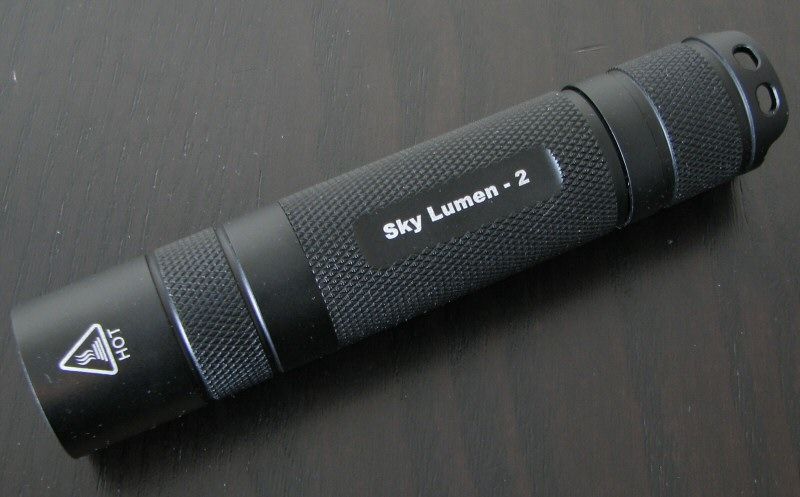
I've reviewed a number of modded lights from Vinh Nguyen here on CPF (vinhnguyen54), and all have been excellent quality. Vinh has recently branched out with a set of new models under his own name. :wave:
In this review, I have his Sky Lumen 2 (SL2) model (aka the "Nano Searchlight"), featuring the his DriverVN circuit. You can see a discussion of his original DriverVN circuit here (which is still available, if desired). As with all Vinh lights, there are always several options available for you to choose from when assembling your build. Let's go through all the details …
Stock Manufacturer Specifications:
(note: as always, these are simply what the manufacturer reports).
- Similar to X2vn but with improvements
- All reflectors now are light OP to improved throw while retaining perfect beam
- "HOT" triangle warning will always line up with branding
- DriverVN is ideal for this light (note V1 is still available as an option, comes with V2 by default)
- DriverVN Can take 1 li-ion cell for XPG2 or XML2 (~2.5-4.2V)
- Reverse clicky switch handles current great and is perfect for mode switching
- All fit and finished are carefully inspected to ensure top notch
- A great EDC and WOW light due to # of modes and max performance
- All springs and connections are reinforced for impact resistance and high current draw
- Great fit & finished with a tough body
- High drained 18650 required for max performance
- $65 Single Mode Max Brightness with XML2 U2 6500K Dome On
- + $35 for DriverVN
- + $10 for XML2 2900K HCRi, 4000K, or 5000K
- + $15 U3 PDTc (Most throw with a coolish tint)
- + $20 Extra .3oz of copper HS
- + $20 Dark heat treated pocket clip
- + $12 International Shipping
- + $5 "V54" hand engraved
- + $12 for anode stripped to bare silver aluminum
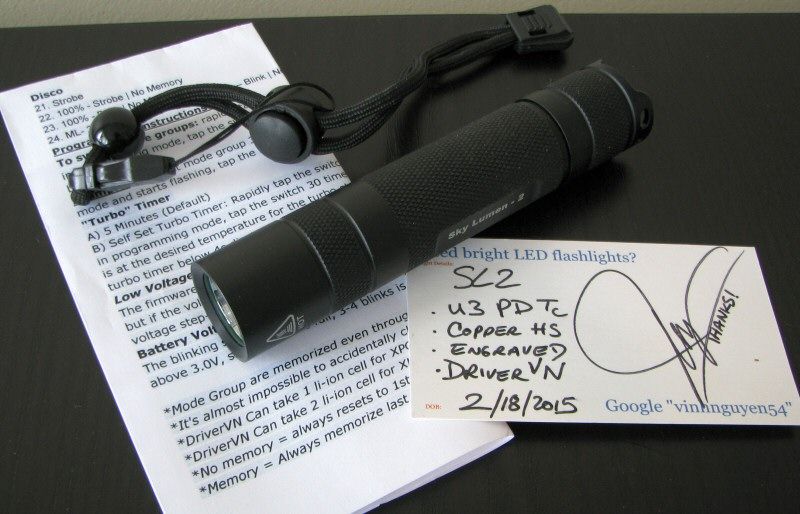
As you can see on the card above, my sample is a "premium" version, featuring the XM-L2 U3 PDTc (premium dedome tint – cool white), copper heatsink, and V54 hand-engraved. There was no box on my review sample, just a basic wrist lanyard and instruction sheet. Everything was securely packaged in layers of bubble-wrap, in a padded envelope.
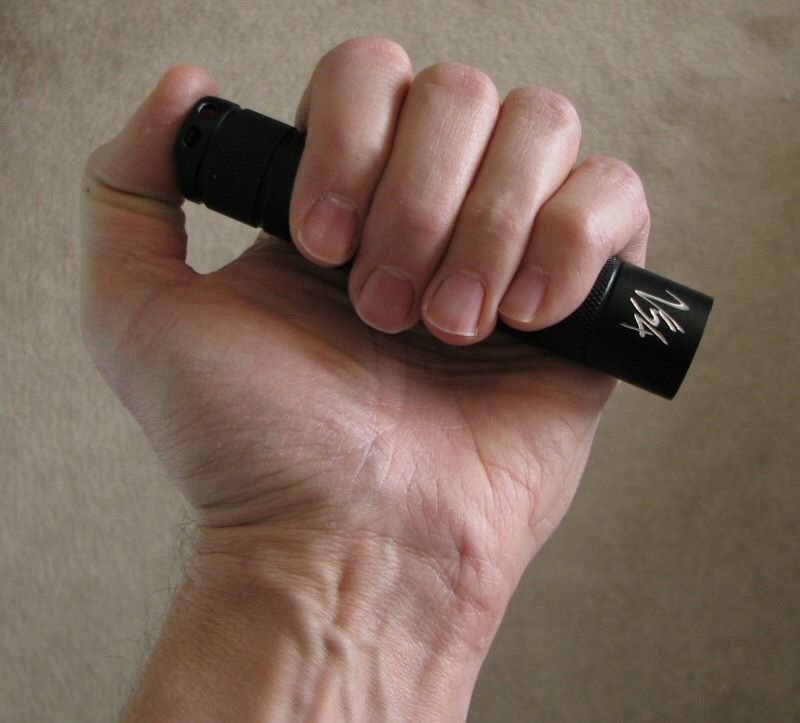
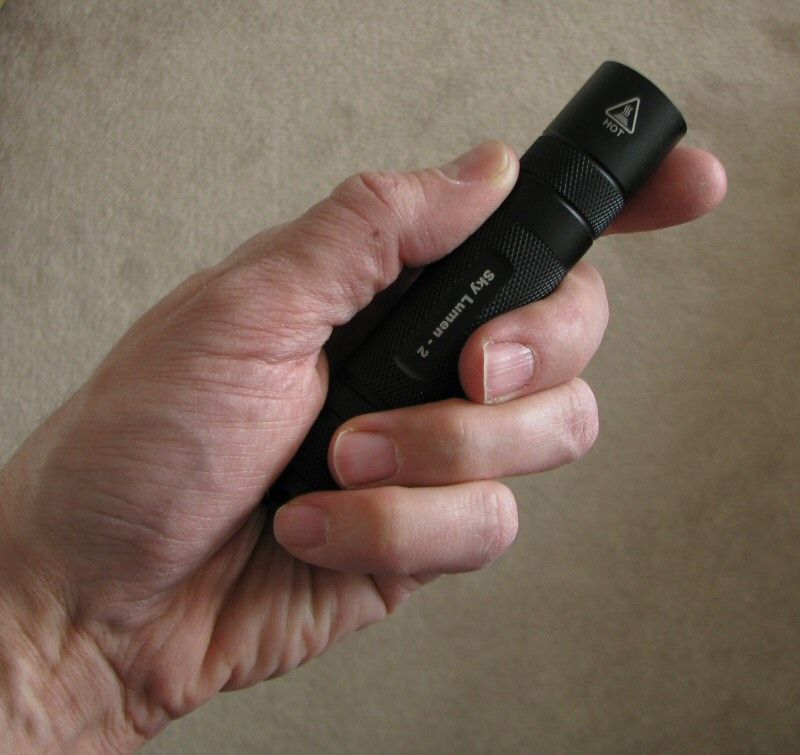
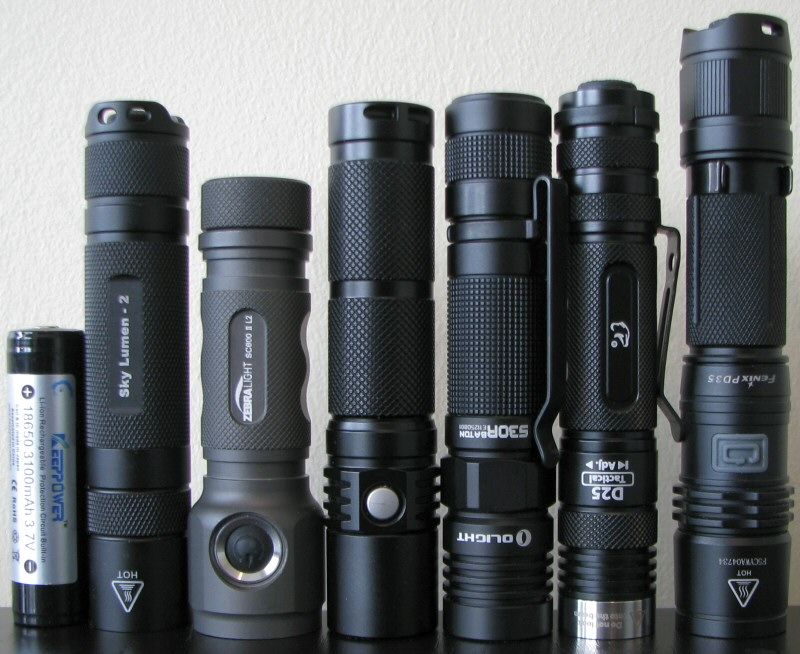
From left to right: Keeppower Protected 18650 3100mAh; V54 Sky Lumens 2; Zebralight SC600-II; Thrunite Neutron 2C 2014; Olight S30R, Eagletac D25 Tactical; Fenix PD35.
All dimensions directly measured, and given with no batteries installed (unless indicated):
V54 Sky Lumens 2: Weight: 83.1g, Length: 119.2mm, Width (bezel): 24.0mm
Eagletac D25LC2: Weight: 50.0g, Length: 116.3mm, Width (bezel): 22.5mm
Eagletac G25C2-II (stock): Weight 141.0g, Length: 150.6mm, Width: 39.6mm
Eagletac S200C2vn (V54 mod): Weight: 168.7g, Length: 155.0mm, Width: 47.0mm
Eagletac TX25C2: Weight 93.6g, Length: 120.4mm, Width (bezel): 31.6mm
Fenix PD35: Weight: 82.7g, Length: 138.1mm, Width (bezel): 25.4mm
Olight M22: Weight: 148.4g, Length: 144.8mm, Width (bezel): 41.2mm
Nitecore P12 2015: Weight: 88.7g, Length: 139.5mm, Width (bezel): 25.5mm
Skilhunt DS20: Weight: 53.8g, Length: 110.0mm, Width (bezel): 24.0mm
Thrunite TN12-2014: Weight: 80.0g, Length: 140.5mm, Width (bezel): 25.4mm
Zebralight SC600 II: Weight 79.3g, Length: 101.8mm, Width (bezel) 29.7mm
Zebralight SC62: Weight: 42.3g, Length: 96.5mm, Width (bezel): 23.2mm, Width (max) 26.1mm
Weight is a touch higher than most lights of this size, likely due to solid body and extra copper heatsink.
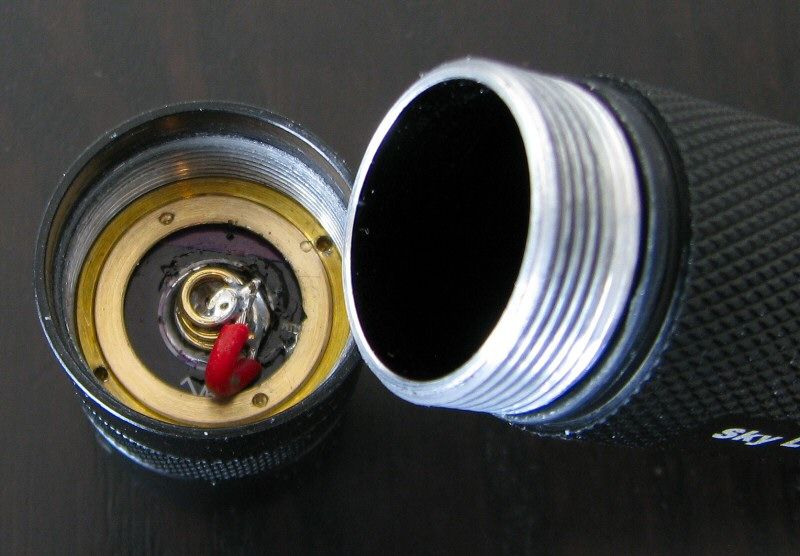
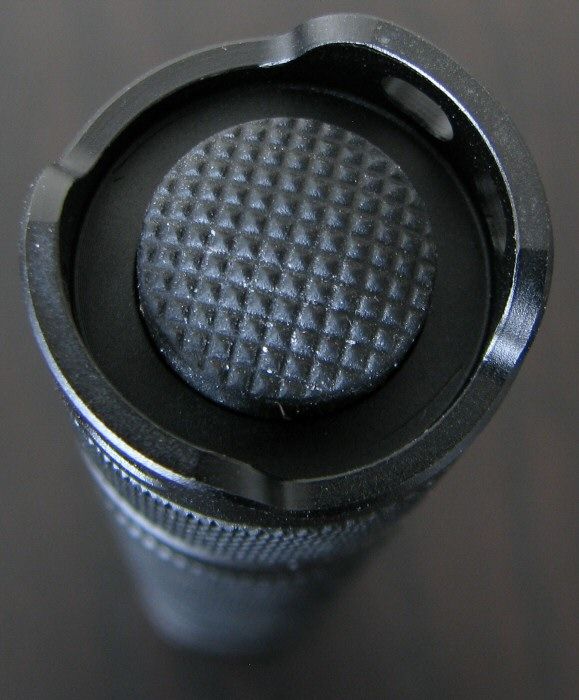

Physically, the SL2 is a very sturdy yet compact build. The light comes in a matte black finish (presumed hard anodized), with no chips on my sample. Hand feel is good, with knurling present over most of the light. Knurling is of reasonable aggressiveness (i.e., above average), helping with grip. I haven't seen the available pocket clip, but that should help further with grip (and serve as an anti-roll feature).
All labels are clear. I personally like the hand-engraved "V54" logo on the head, to identify the source of the light.
The SL2 uses the the DriverVN circuit. This circuit can take 1x18650 Li-ion only, when coupled with XP-G2 or XM-L2 emitters (~2.5-4.2V), as is the case here. On lights with higher output emitters, a different version of the DriverVN typically allows 2x Li-ion cells (i.e., when included with XHP50, XHP70, or MK-R emitters - ~5V-8.4V)
The tailcap is a reverse clicky switch, with traditional feel. I realized some may be initially disappointed with the lack of a forward clicky – but a reverse clicky works better with the DriverVN interface. It also better handles the high current modes in this light (i.e., according to Vinh, even the McClicky wouldn't last long in this light). Keep in mind that most high output lights in this size use an electronic switch (with a standby drain).
As with many of Vinh's mods, the springs located in the tailcap and on the head contact board both have low-resistance wires soldered through. This facilitates the transmission of heavy drain current.
There are raised areas on two sides of the switch, serving as lanyard attachment points (and allowing for stable tailstanding). Screw threads are regular triangular cut, and anodized in the tail region for lock-out.
There is no bezel ring – the lens appears to be mounted from inside the head.
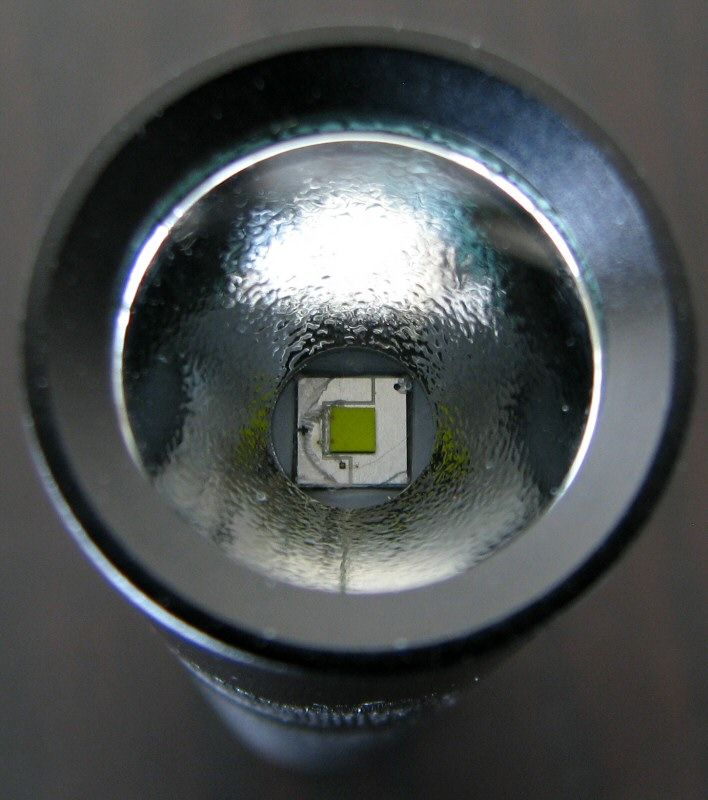
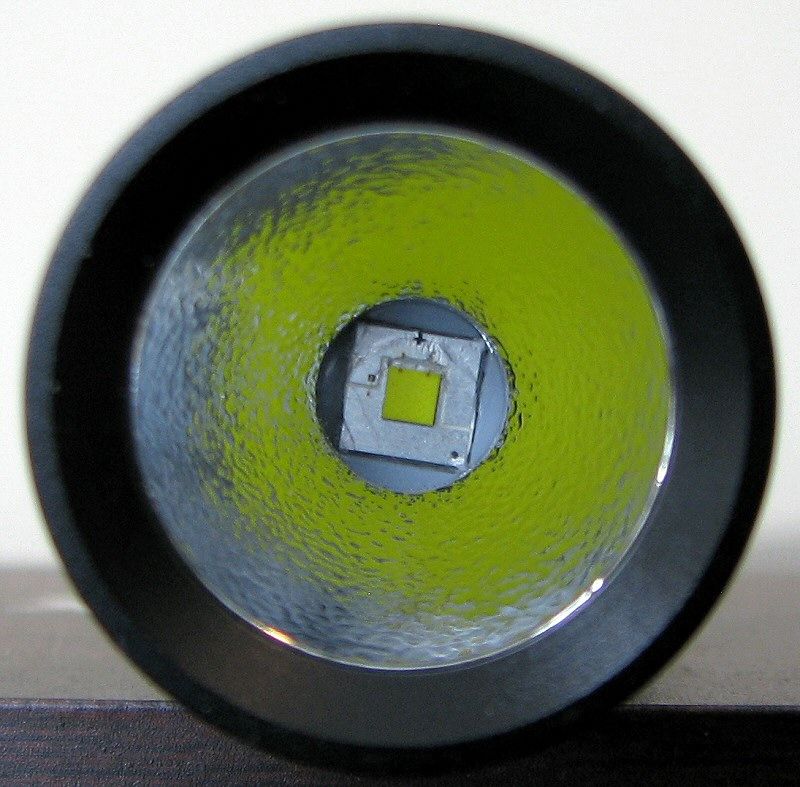
My sample of the SL2 features the dedomed XM-L2 U3 (PDTc). Although the reflector is fairly small and lightly textured, it is reasonably deep for this size light. Coupled with a dedomed emitter, I would expect excellent throw performance. Scroll down for beamshots. :wave:
Overall impression of the physical build is that the SL2 is a study and solid design, if somewhat Spartan (i.e., "no frills"). I like the slightly extra "heft" in the head, likely due to the integrated copper heatsink.
User Interface
The Sky Lumen 2 uses the 1xLi-ion configuration of the DriverVN circuit. My sample came with the V1 DriverVN, but the V2 is apparently now standard (V1 available as an option).
Turn the light on by a click-release of the tailswitch (i.e., reverse clicky switch). The light comes on in the first output mode of its pre-defined set (with or without memory, as desired).
To explain how that works, here are the 24 selectable groups of output modes. Note these have been updated from the original DriverVN V1.
DriverVN V1:
1 Mode
1. 100%
2 Modes
2. 10% - 100% | Memory
3. 10% - 100% | No Memory
4. 100% - 10% | No Memory
3 Modes
5. 1% - 25% - 100% | Memory
6. 1% - 25% - 100% | No Memory
7. 100% - 25% - 1% | Memory
8. 100% - 25% - 1% | No Memory
4 Modes
9. ML - 2% - 25% - 100% | Memory
10. ML - 2% - 25% - 100% | No Memory
11. 100% - 25% - 2% - ML | Memory
12. 100% - 25% - 2% - ML | No Memory
5 Modes
13. 1% - 5% - 15% - 40% - 100% | Memory
14. 1% - 5% - 15% - 40% - 100% | No Memory
15. 100% - 40% - 15% - 5% - 1% | Memory
16. 100% - 40% - 15% - 5% - 1% | No Memory
6 Modes
17. ML - 1% - 5% - 15% - 40% - 100% | Memory
18. ML - 1% - 5% - 15% - 40% - 100% | No Memory
19. 100% - 40% - 15% - 5% - 1% - ML | Memory
20. 100% - 40% - 15% - 5% - 1% - ML | No Memory
Disco
21. Strobe
22. 100% - Strobe | No Memory
23. 100% - Blink | No Memory
24. ML- 2% - 15% - 40% - 100% - Strobe – Blink | No Memory
Each mode group works as described above – simply soft-press the switch (when on), to move through all the modes of that set.
When a "No memory" set is selected, this means the light always resets to 1st mode after 1 sec of being off. When a "Memory" set is selected, it means the light will always memorize the last mode after 1 sec of being off.
To switch mode groups, rapidly tap the switch 8 times (from on). The light will then enter the programming mode and begin to flash. While the beam is flashing, tap the switch the same number of times as your desired mode group above. The light will blink once and your new mode group will be memorized. Note that this mode set selection is retained even through battery changes.
In fact, the flashing after the 8 fast taps is actually a battery indicator - the number of flashes relates to battery voltage. Flashes go in steps of 0.1V above 3.0V. So, 12 blinks is fully charged (i.e., 4.2V), 1 blink is nearly depleted (i.e., 3.1V). As such, I recommend you use a fairly well charged cell when planning to reprogram the light.
There is also a Turbo step-down timer, turned on by default and set to 5 mins continuous runtime. To reset this timer (or turn off), enter programming mode as described above (i.e., rapidly tap the switch 8 times). With the light in programming mode, tap the switch 30 times to choose the Turbo timer set mode. The light will then switch to 100% power. When the light is at the desired time for Turbo step down, turn the light off. The Turbo timer will then be set to this time. Note there is a maximum of 20 minutes. Setting a Turbo timer below 4 secs disables the feature.
The firmware has a (fairly novel) low voltage warning feature. If the voltage drops below 3V, the brightness is greatly reduced. That will bring the voltage up again a bit, which may cause brightness to rise again. But once the voltage of the drained battery falls down below that 3V level again, brightness will be reduced again, down to a low level. This low voltage step-down can be disabled by Vinh at the time of ordering, if desired (but is a useful feature if you are planning to use unprotected cells).
Video:
For information on the light, including the build and user interface, please see my video overview:
As with all my videos, I recommend you have annotations turned on. I commonly update the commentary with additional information or clarifications before publicly releasing the video.
As an aside, if you want to get an instant notification for every new review that I post here on CPF, you can subscribe to my YouTube channel (the vids go public at the same time). Just mouse over my logo watermark on the top right-hand corner of the video for the subscribe feature to open up. You may need to tap or click, depending on the platform you are using to watch. :wave:
PWM/Strobe
The DriverVN circuit on the SL2 appears to be current-controlled. I saw no sign of PWM in my testing, on any level. There was a high frequency circuit pattern detectable on my oscilloscope, but this was not visible to the eye. Here are some representative plots:
Moonlight:
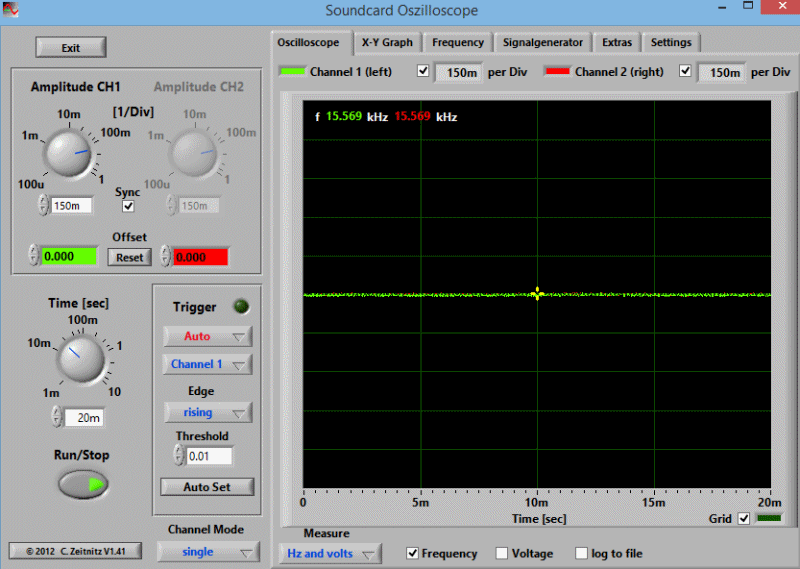
2%
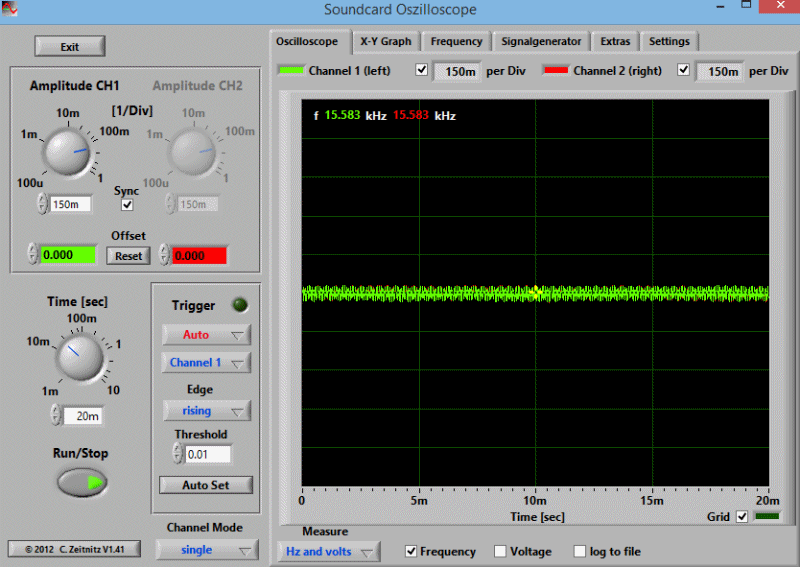
15%
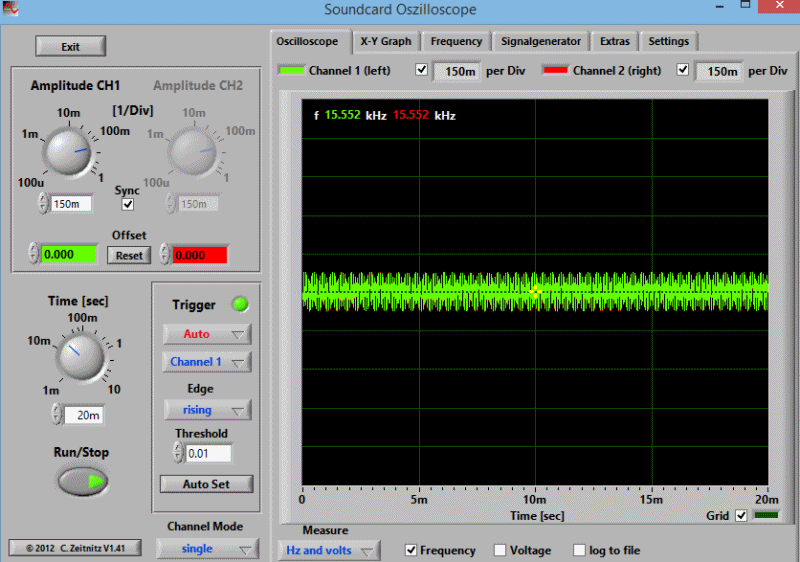
40%
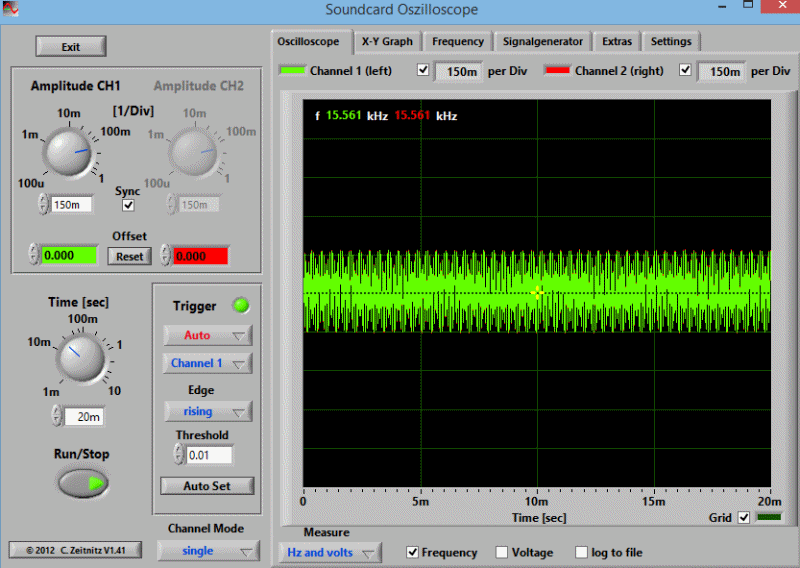
100%
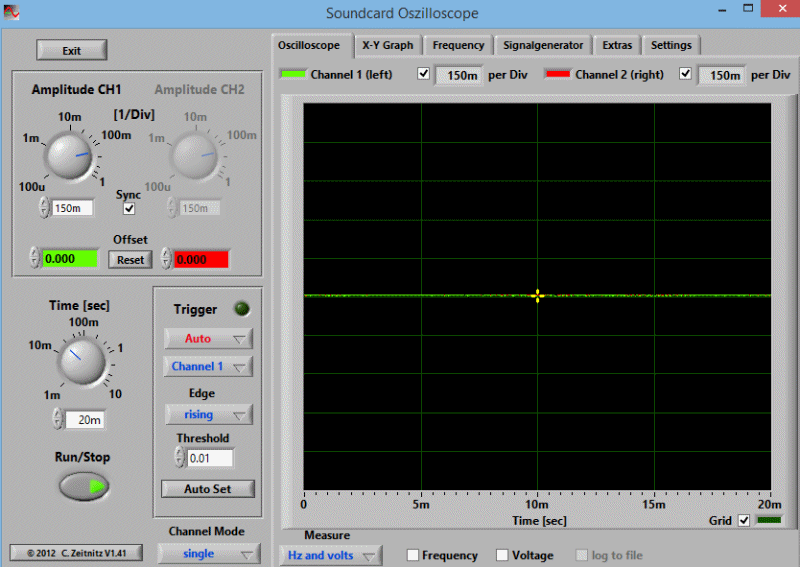
As you can see, this high frequency circuit noise is ~15.6 kHz, and disappears on max. Here is another timescale resolution on one of the medium modes, to show it better:
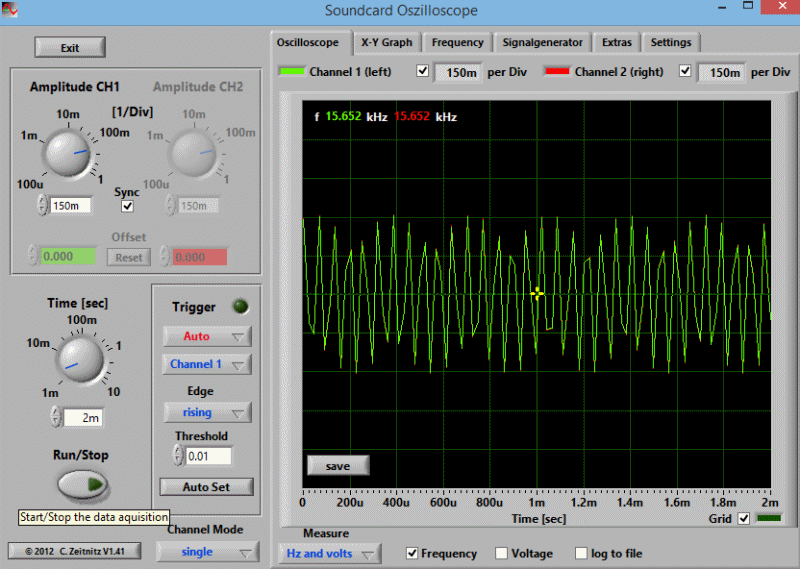
This may look familiar to reads of my reviews – I found exactly the same pattern on the Imalent DDT40 that I reviewed recently.
Consistent with my standard review policy, I report on any oscilloscope signals that I can detect in the output of a light. But I can assure you that the above patterns produce no visible effect – even when shining on a fan. The SL2 was "flicker-free" at all levels in my testing.
Strobe:
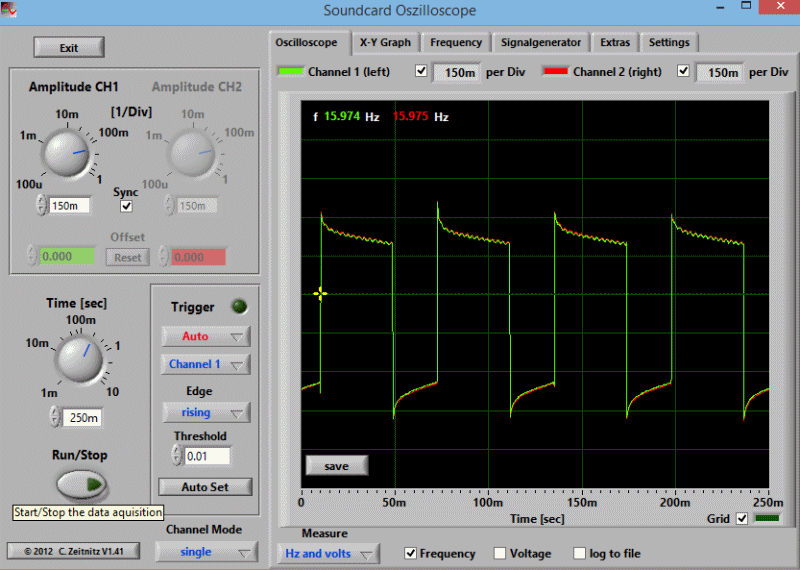
Strobe is a typical fast "tactical" strobe, of 16 Hz in my testing.
Blink:
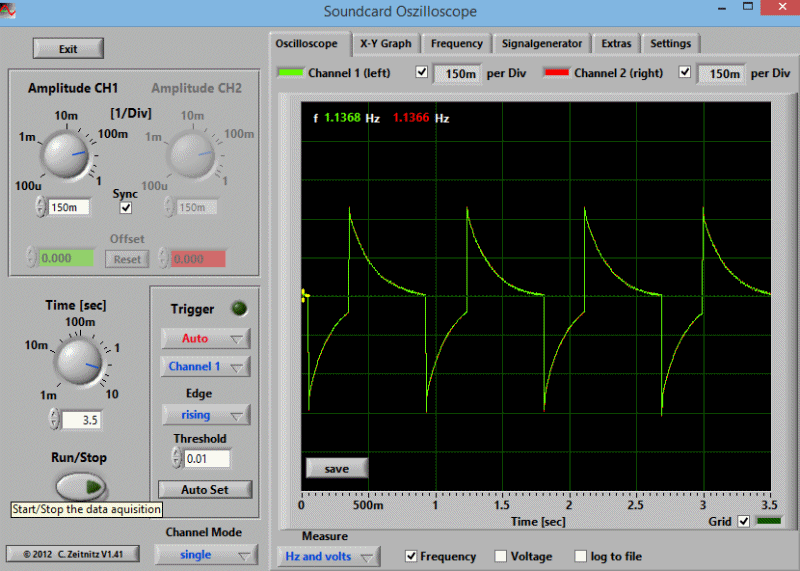
Blink mode is an on-off flash, at just under 1 sec repeating sequence.
No Standby Drain:
Thanks to the physical reverse clicky switch, there is no standby drain when off.
Beamshots:
For white-wall beamshots below, all lights are on Max output on an AW protected 18650 battery (high-drain rated in the case of the V54 SL2). Lights are about ~0.75 meter from a white wall (with the camera ~1.25 meters back from the wall). Automatic white balance on the camera for cool white tints (to minimize tint differences), and Daylight white balance (Canon) for all dedome emitters.
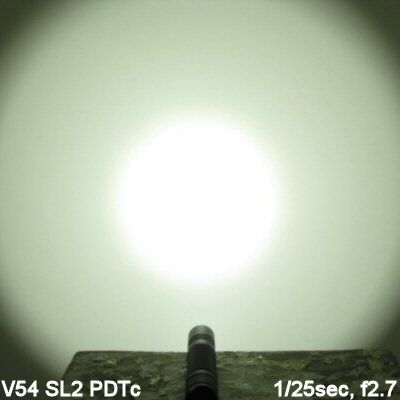
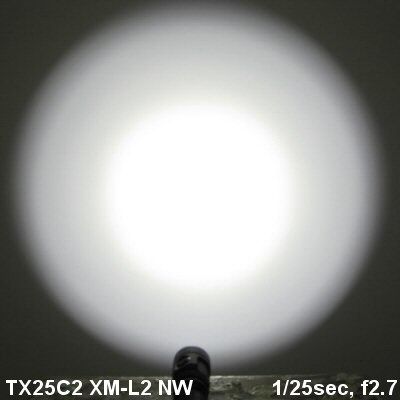
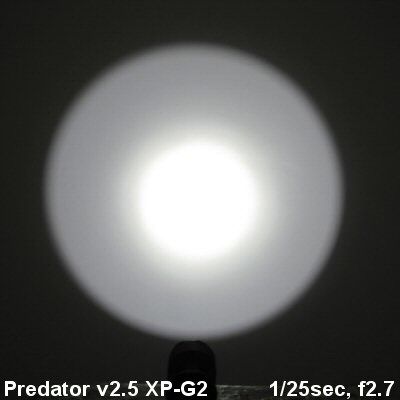
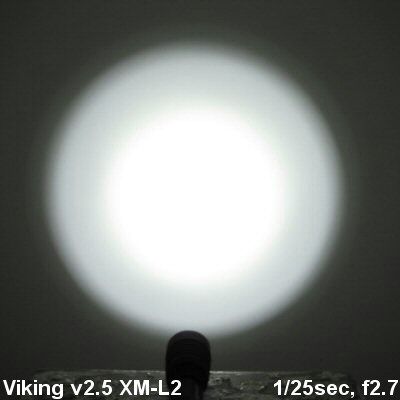
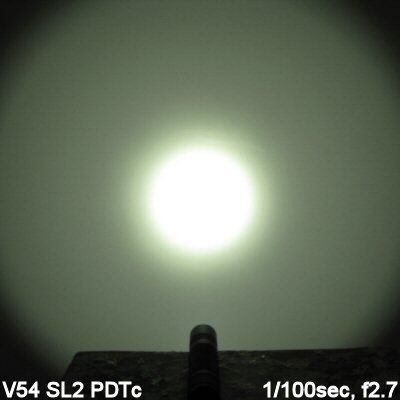
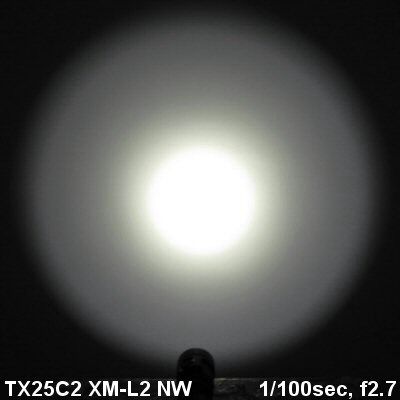
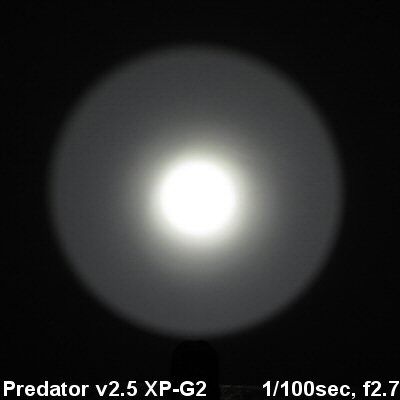
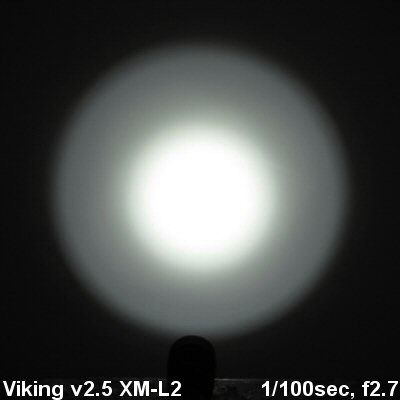
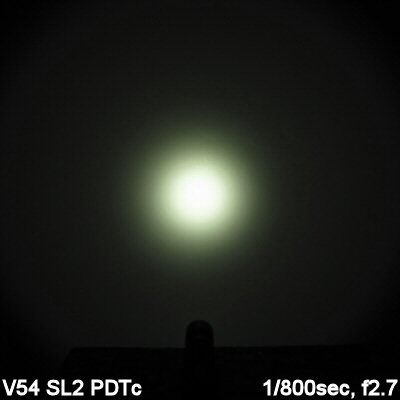
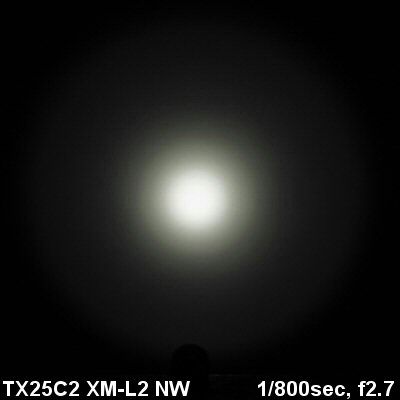
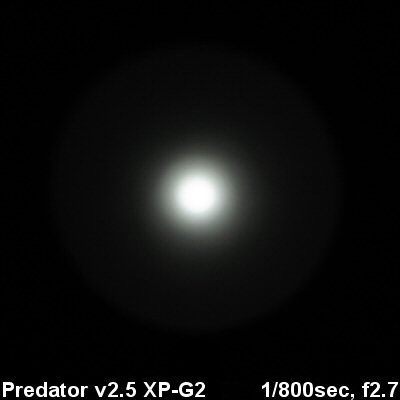
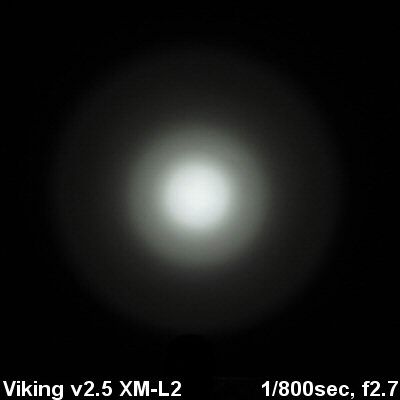
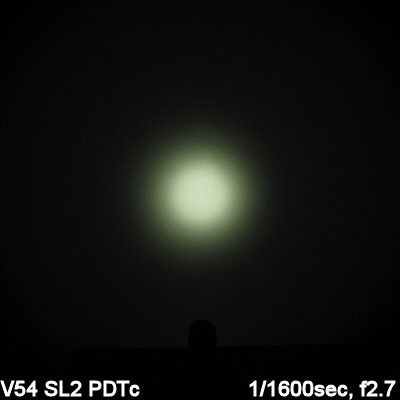
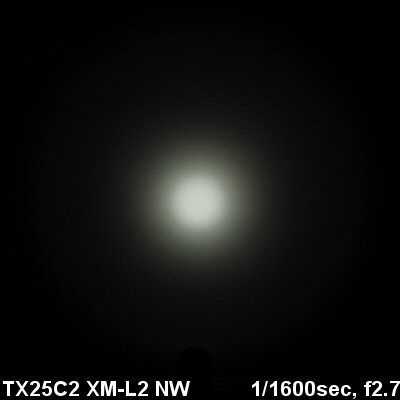
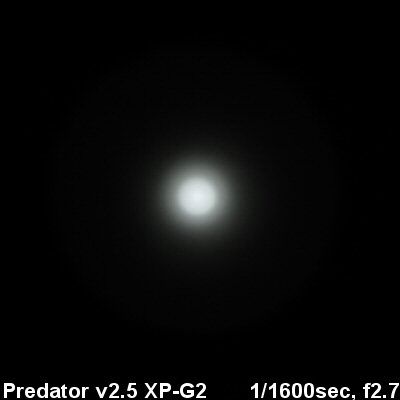
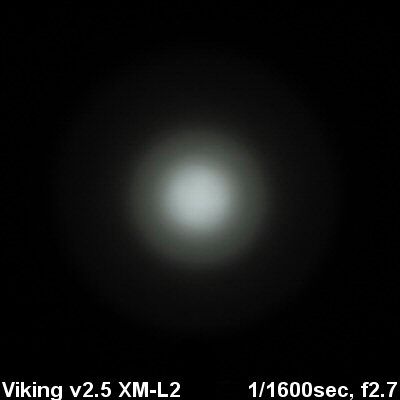
The dedome (PDTc) version of the SL2 reviewed here has the classic tint shift common to dedome emitters. But it also has much greater throw – as you can see from above, the slim SL2 actually rivals (or beats) much larger stock XM-L2 lights like the Eagletac TX25C2 and Armytek Viking. I'm a little surprised as how well the SL2 does against the TX25C2, but I do have the slightly lower output Neutral White T6 version of that model.
Let's see how the SL2 compares to some custom dedomes from Vinh:

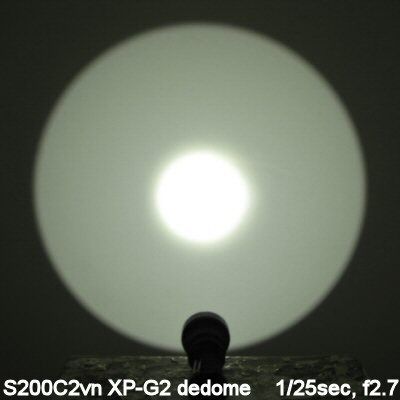
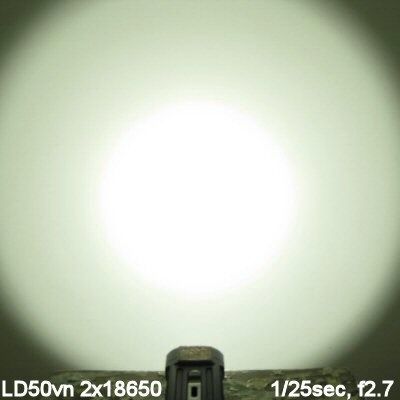
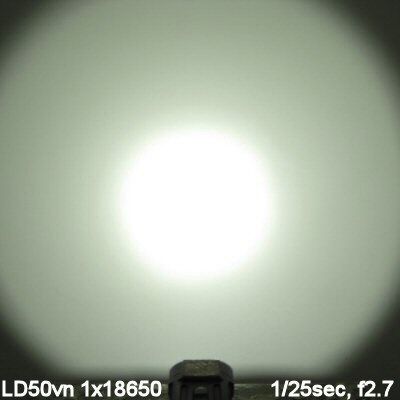

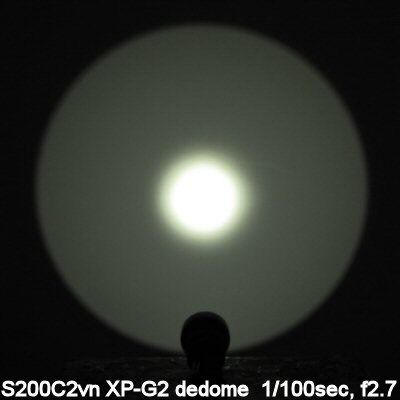
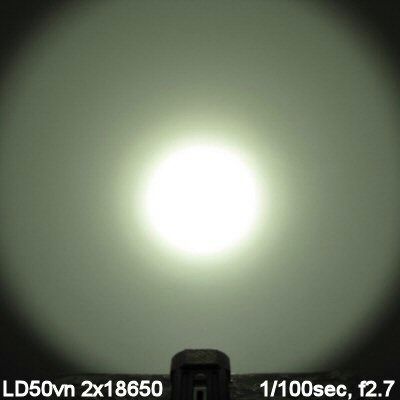
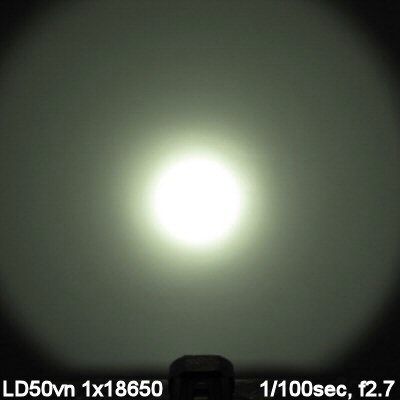

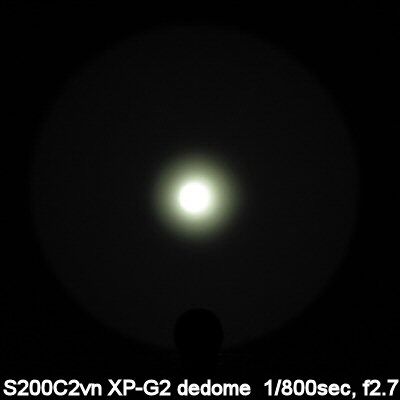
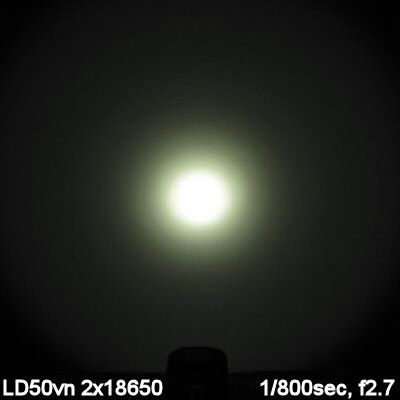
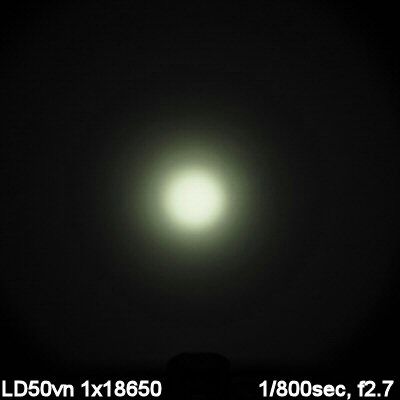

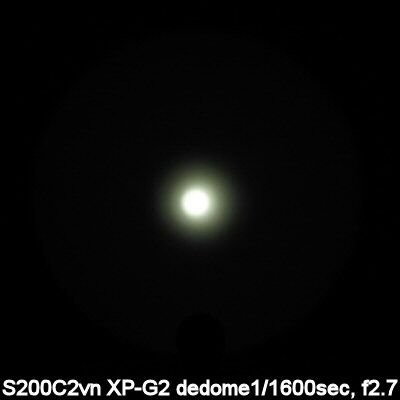
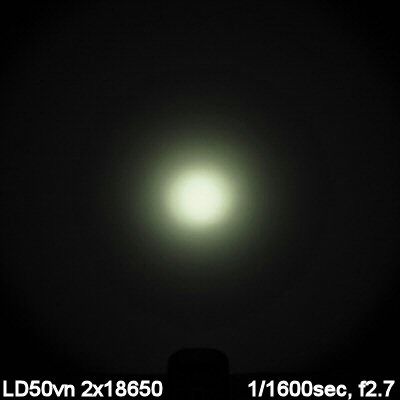
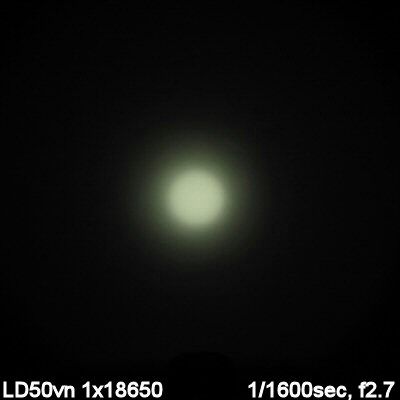
Basically, the SL2 is driven harder on a single emitter/18650 than the LD50vn is. The result is that output/throw of the SL2 (on 1x18650 high drain 18650) is somewhere in-between the LD50vn on 1x and 2x 18650.
Since we are still in winter here in Canada, below are some indoor shots in my basement. For your reference, the back of the couch is about 7 feet away (~2.3m) from the opening of the light, and the far wall is about 18 feet away (~5.9m). Below I am showing a couple of exposures, to allow you to better compare hotspot and spill.

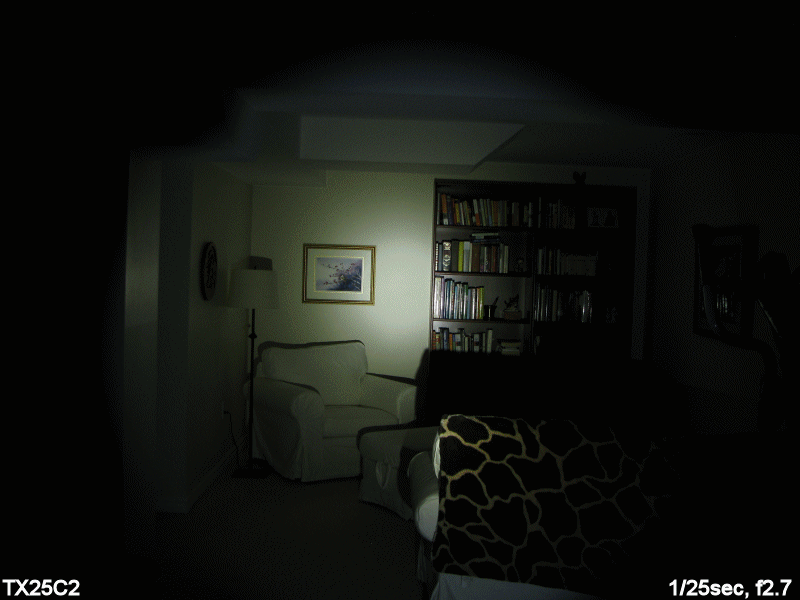
Again, the SL2 has a throw advantage over my Olight M22 or Eagletac TX25C2 (NW T6), with a broader and brighter hotspot.
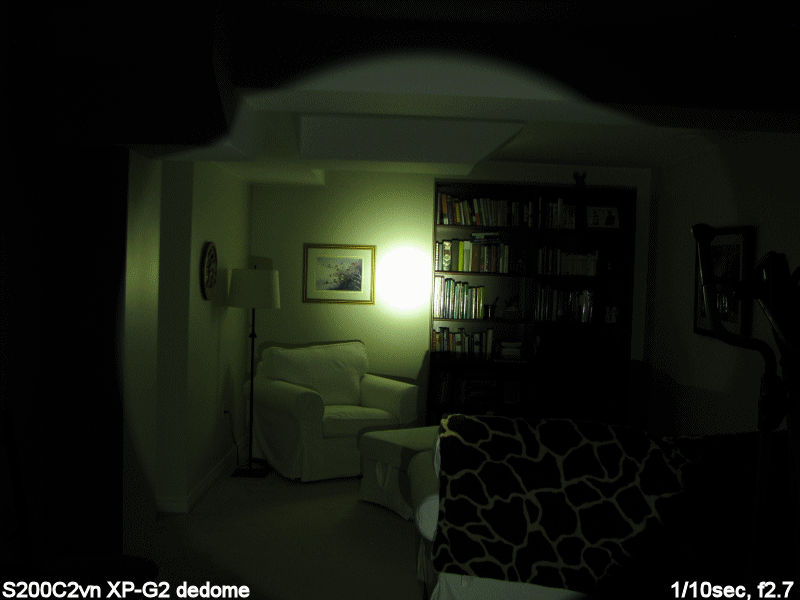
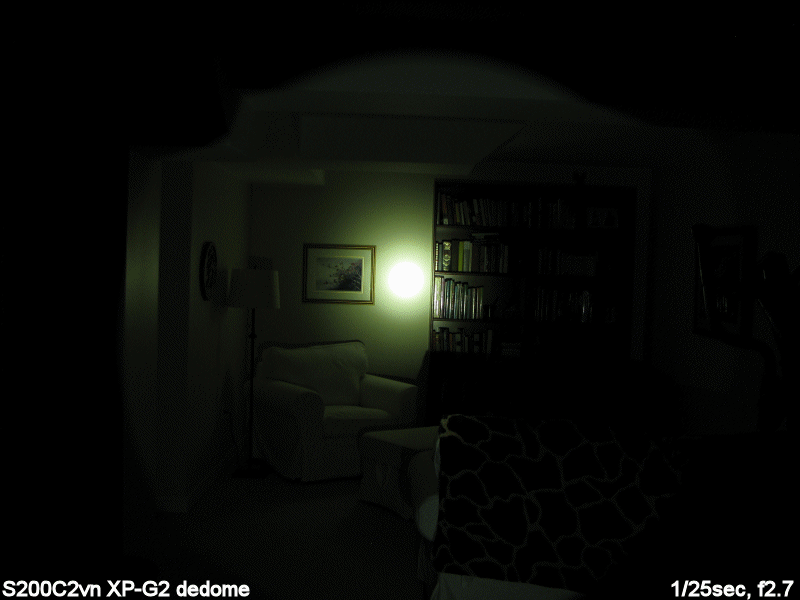
Obviously, the SL2 can't compete dedomed lights with larger reflectors, but it is still an impressive amount of raw output (on high-drain rated 18650).
Testing Method:
All my output numbers are relative for my home-made light box setup, as described on my flashlightreviews.ca website. You can directly compare all my relative output values from different reviews - i.e. an output value of "10" in one graph is the same as "10" in another. All runtimes are done under a cooling fan, except for any extended run Lo/Min modes (i.e. >12 hours) which are done without cooling.
I have devised a method for converting my lightbox relative output values (ROV) to estimated Lumens. See my How to convert Selfbuilt's Lightbox values to Lumens thread for more info.
Throw/Output Summary Chart:
My summary tables are reported in a manner consistent with the ANSI FL-1 standard for flashlight testing. Please see http://www.flashlightreviews.ca/FL1.htm for a discussion, and a description of all the terms used in these tables. Effective July 2012, I have updated all my Peak Intensity/Beam Distance measures with a NIST-certified Extech EA31 lightmeter (orange highlights).
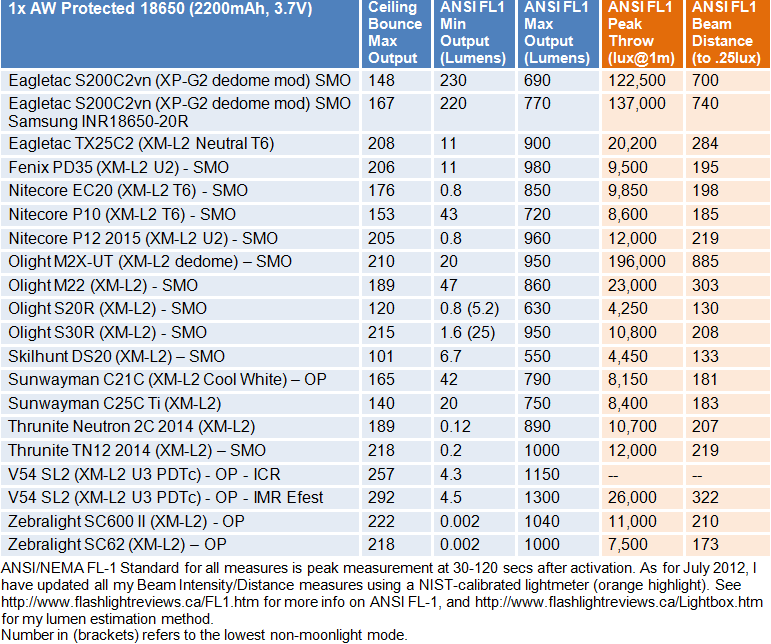
As with all current-modded Vinh lights, you really need to use high-drain IMR/INR/Hybrid cells to see max output. The best performance that I saw was with an Efest IMR 18650 2500mAh (35A rated), supplied by Vinh. Frankly speaking, this is by far the most output I've seen in the 1x18650 class.
 I DO NOT recommend you try running this light on max on standard ICR cells. But in the interest of science, I thought I would try a limited experiment, just to see what happens, on lumen output on various types of cells.
I DO NOT recommend you try running this light on max on standard ICR cells. But in the interest of science, I thought I would try a limited experiment, just to see what happens, on lumen output on various types of cells. 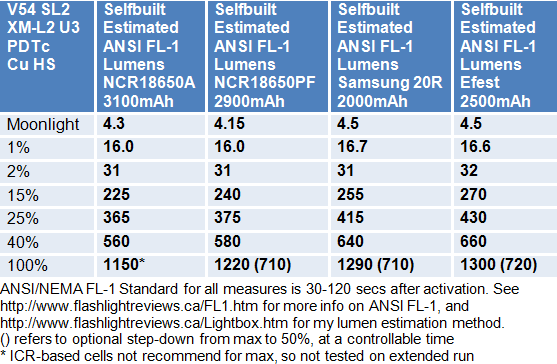
As you would expect from the rated current draw limits, the Efect IMR 35A out-performs the Samsung INR 20R, which in turn out-performs the NCR18650PF IMR and the NCR18650A ICR. Although I am not showing initial activation, the Efest 35A was able to produce >1350 estimated lumens initially.
Interestingly, lower output levels are slightly different across the board. It really seems like the circuit is running on a percentage of the max output that a given cell can deliver. For example, the "15%" level is a fairly consistent ~20% of the initial max output that a given cell will produce, in my testing.
Output/Runtime Graphs:
I am not going to destroy a NCR18650A cell by during 100% runtimes,
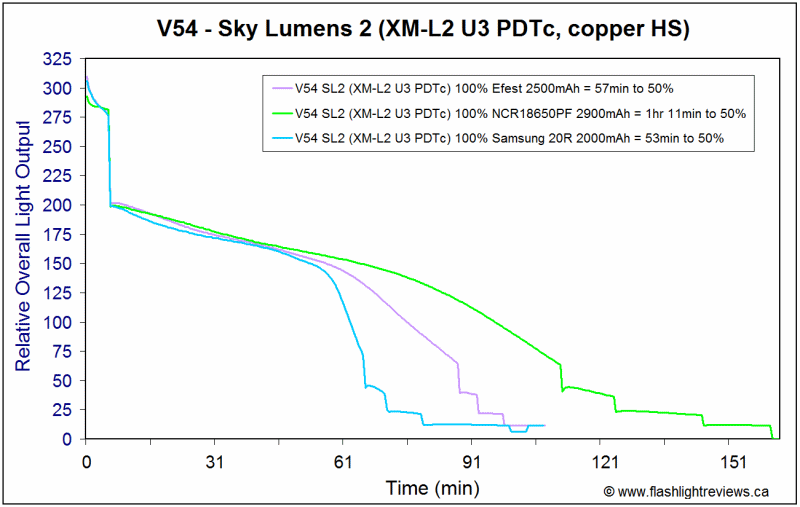
The Efest 35A/Samsun 20R cells clearly do a better job maintaining initial max output. Once step-down occurs (set by default to step-down to 50% after 5 mins), there is not really a big difference between any of these cells. Basically, it just comes down to their stated capacity ratings.
You will note the largely direct-drive like pattern of the runtimes – except as the batteries drain significantly, at which point a step-down pattern emerges for really low levels. This would be the 3V low voltage feature described in the User Interface section.
Here is how NCR18650A does at lower levels:
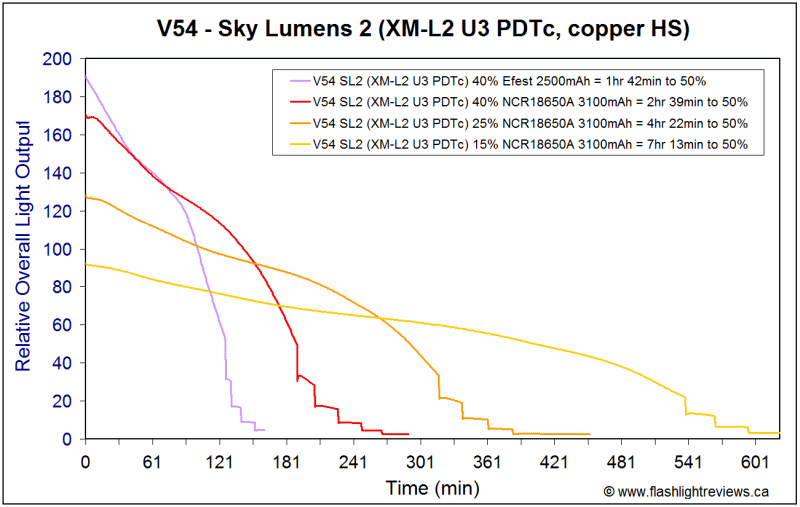
You can see the difference with the Efest 18650 – the NCR18650A 3100mAh output is lower to start, on the 40% level. But runtime patterns again seem to be largely direct drive (i.e., determined by internal resistance of the Li-ion battery). This is generally quite efficient – and you will not be able to notice the gradual dimming over time.
Here is how the SL2 compares to other lights in this class, all on NCR18650A (except for 100% on the SL2):
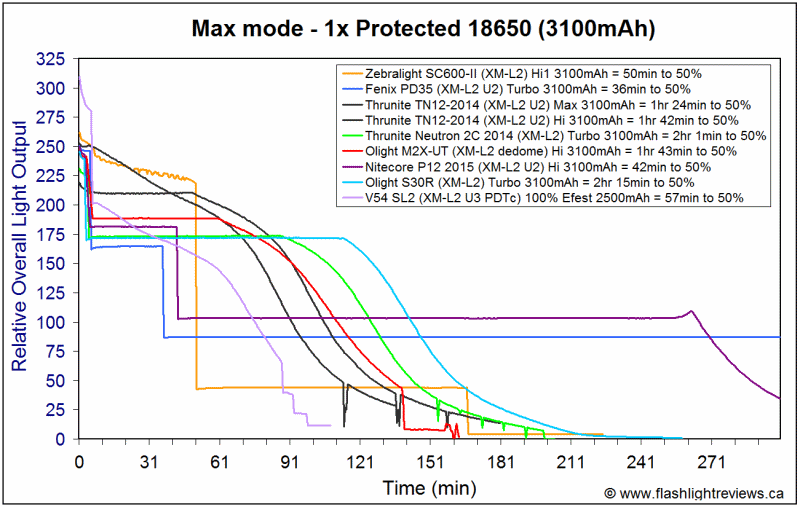
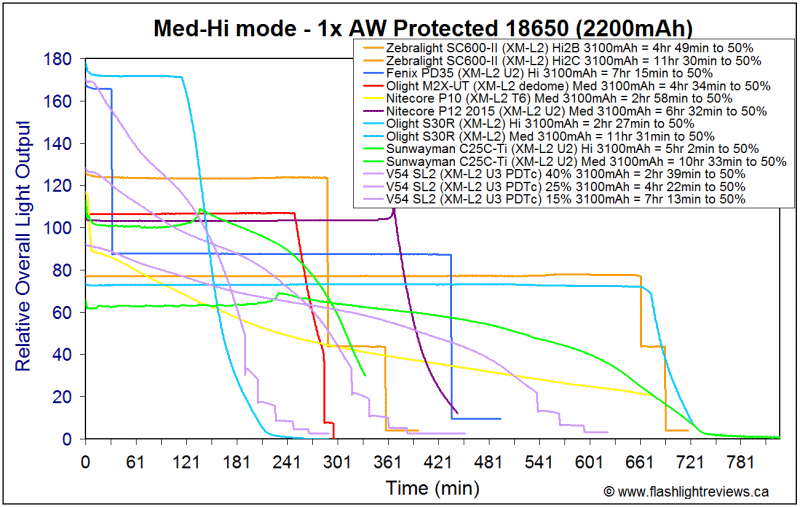
There is definitely some minor loss of relative output/runtime efficiency, compared to the current-control competition (and despite the direct-drive like pattern here). But keep in mind that Zebralight, Olight and Fenix have the most efficient circuits out there - it is hard to fully compete on their playing field. The SL2 is still perfectly acceptable in my view, and performs at least as well as the good-quality PWM-based lights, like the Nitecore P10 and Sunwayman C25C-Ti.
It is interesting though that this is a similar level of efficiency and regulation to what I have seen on current-controlled Imalent lights - which also share the same high-frequency circuit harmonics seen here. I wouldn't be surprised if Vinh's DriverVN is sourcing similar components to Imalent's circuits.
The V54 SL2 does not run on 2x battery sources.
Potential Issues
Only 1x18650 Li-ion is supported, and high-drain IMR/INR chemistry is required if you want to run at 100% output.
The light is very heavily-driven on max, and gets quite hot quickly. You have the option to adjust how long it takes before step-down occurs (or turn this feature off). I recommend you leave it at the 5 min default (or shorten the time).
Light uses a reverse clicky switch, as forward clickies can't handle the current draw. This control interface is thus similar to electronic switch lights (i.e., click to activate), but you have the advantage of no standby drain here.
Light can roll easily in its native form
The DriverVN circuit offers a simple to use interface once programmed, and a wide range of potential mode sets if you want to reprogram. You will need the instruction sheet if you plan to reprogram the light, however.
Light shows a direct-drive-like regulation pattern.
Dedoming of the emitter (to increase throw) tends to produce a warmer overall beam tint. As expected the "premium dedome tint" (PDTc) gave a slightly green-yellow tint (although not as bad as the white wall beamshots would suggest). Long-term reliability of dedomed emitters remains an unknown.
Preliminary Observations
The SL2 is the first light I've reviewed from Vinh that is not a mod of an existing build – this a Vinh Nguyen light through-and-through.
As with many lights that bear Vinh's signature, the SL2 that I received uses a premium dedome emitter (XL-L2 U3 PDTc in this case), and is driven to extremely high output levels. You can thank the extra copper heatsink for letting the light reach >1300 lumens on a single 18650.
This of course bring up the immediate point that you are going to have use high-drain rated 18650 batteries in this light – standard ICR chemistry cells just won't cut it. And as my battery analysis above shows, the higher the maximum drain rating of the IMR/INR cell used the better. The Efest IMR 35A-rated 2500mAh seems like the best choice from among what I have on hand.
Thanks to the dedome emitter and high drive level, the petite SL2 can easily rival the beam distance of much larger 18650 lights, like the Olight M22, Eagletac GX25C2/TX25C2, etc. This is a very impressive showing for such a small light.
In terms of the circuit, I like the range of mode sets provided in the DriverVN circuit. There is something for everyone here, with options for memory/no memory, Hi > Lo sequence, Lo > Hi sequence, and anywhere from 1-6 levels programmed (with or without blinking modes). :thumbsup: You also get to turn the automatic step-down from max on/off, and even manually set the duration before step-down occurs. There is even a creative low voltage warning feature, to ensure you don't accidentally over-discharge your unprotected high-drain cells (but will never leave you in the dark unexpectedly).
With all that going for it, are there any limitations? Well, I imagine some won't like the reverse clicky switch - although this is really more useful for the sophisticated programmable interface provided here. This is a very high-drain light, and forward clicky switches apparently can't handle these kinds of currents (i.e., there's a reason most high-drain lights this size use an electronic switch). Electronic switches are typically similar in interface to reverse clickies - but all have a standby drain (that the SL2 doesn't).
Again, this is not a light for the uninitiated – you need to understand the basics of Li-ion battery chemistries, and use good judgement when running on max output. :sweat: But if you are seeking an output/throw screamer in a compact build, the SL2 is a clear leader in this field. For more information on this light, and your various options, please see Vinh's Sky Lumen 2 discussion thread here in the modders forum of CPF.
----
SL2 was provided by Vinh Nguyen (V54) for review.
Last edited:


 Thanks sb and V54.
Thanks sb and V54.